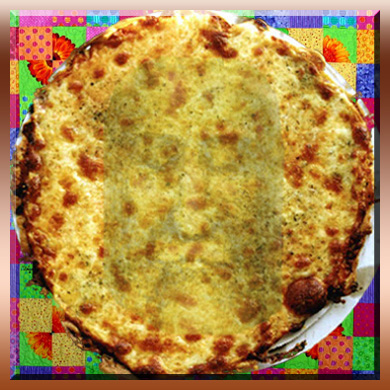
BREAD BAKING
TIPS - Economics of Home Baking

It might be time to start shopping more in stores with cement floors. Money is
tight these days. There is talk of recession and even
depression. Now is a great time to start making your own bread and saving a
little
money in the process.
I like to use the best and freshest ingredients in my bread baking, but
dollars matter. The fifty-pound bag of unbleached bread flour that I have been
buying from a food broker has gone from $14 US in the last year to more than $28 US.
That is just too much to pay. It doubled in price in the last year due to the
increase in energy costs. Remember $145 a barrel oil? With oil now at about $50
US a barrel, my flour is still $28 US! I have just started buying 50
pound bags of bread flour at a big-box store for $14 US. It is bleached vs.
unbleached, but for the money it is a better deal. They also have the best price
on 2 pound bags of active dry yeast.
Home economics used to be taught in schools. We are all watching our money today
and there are ways to save. When using a "lesser" flour, try soaking it for a
few hours before baking. I define a "lesser" flour as one that is not freshly
ground or has a lower than optimum gluten content. My food broker's flour is
freshly ground at the mill and sold within days. Grinding your own flour is
fresh ground by definition. Flour purchased at a big-box store may have been
sitting in a warehouse distribution center for who knows how long. You may not
make that much bread and a 50-pound bag is around for quite a while. The fresher
the flour the better, but when you are watching your money there are things that
you can do.
You can store the flour in your chest freezer. Freezing will preserve the
freshness and moisture content. Keep your yeast in the freezer once you have
opened the bag. Try putting bay leaves in your flour to stop little black bugs
from taking over. If you have bugs, sift the flour to remove them. In a lot of
places around the world the bugs would be considered a source of needed protein.
The idea of soaking the flour in water is because flour loses moisture over
time. The drier the flour, the faster your bread will go stale. Remember, the
baking process simply removes the water from the loaf after it has taken its
shape in the oven. Industry actually measures the moisture content of flour with
expensive metering equipment and uses the results to formulate their batches of
dough. By soaking your flour in water we are
increasing the moisture content of the flour and our resultant loaf will stay
fresher longer. (Note: I never over bake my loaves.)
We will get an added benefit from soaking our flour. Less expensive flour
generally has lower gluten content. All purpose flour has lower gluten content
than bread flour. Premium/artisan bread flour has an even higher gluten content.
By soaking the flour we will activate more of the gluten in our flour. We will
in effect stretch the gluten we have further. We get the effect of having a
higher gluten content than we actually have. We can get better results with a
"lesser" flour. It is a way to make your food dollars go further.
Remember, the gluten is the glue that forms the structure of our loaf. The
gluten forms the air pockets in the loaf. The glue becomes sticky when mixed
with water. It is generally known that kneading activates or works up the
gluten. What I am saying is that soaking adds to the effect of kneading. Soaking
will give you a bigger, fuller, lighter loaf than dough that was kneaded only
and not soaked. That is how we get more from a "lesser" flour without paying
more for a "greater" flour.
To sum all this up do the following: Mix equal parts of flour and water and put
in a tsp. of yeast. Let it sit for a few hours or even over night. Use this
starter in your next batch of bread. Just substitute starter for equal portions
of water and flour as called for.
Learn more bread baking tips in the privacy of your own home and at your own
pace in my eight hour take at home baking class Video Bread Artisan Series.
Or maybe you want to learn how to master sourdough Video Sourdough.
More Tips
at the following links:
© Copyright
1990-2021
Video Bread
videobread@gmail.com
Better bread baking starts
with Video Bread. The recipe for success!


